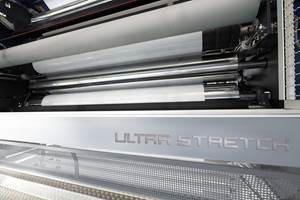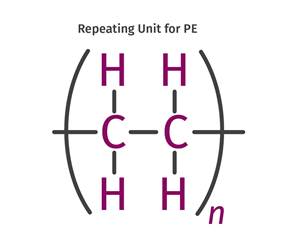What to Calibrate on Your Press
There are different approaches to meeting the goal of making parts identically. At the heart of all them is the process or the machine setup sheet. My bet would be you cannot find two that are identical.
In injection molding, the task is to make all parts “identical” from run to run. What constitutes identical depends on the application—for example, parts for aviation, medical, and the like would have more stringent requirements than would flower pots or drink coasters.
There are different approaches to meeting this goal. At the heart of all them is the process or the machine setup sheet. This sheet documents the process, and attempts to specify the machine, mold, and resin process variables so that “identical” parts are produced, shot to shot, run to run, and machine to machine. Of the thousands of molders in North America, each has its own setup sheet. My bet would be you cannot find two that are identical.
To be fair, this is a difficult task, as the processor must deal with hundreds of variables, from the moisture content of the material to the temperature of the melt. If we want to make “identical” parts we need to ensure these processing variables are controlled and held within a reasonable tolerance. That mandates that when you set up a process, you input the correct process setpoints and actually achieve those process conditions, whether they be temperatures, pressures, times, injection rates, cooling rates, or whatever you have determined is important.
Does the industry agree on what process variables are necessary to specify and control? No. So what’s a molder to do? In my view, you should have only one setup sheet per mold, not a setup sheet per machine. The point is that whatever you input into the machine controller—pressure, time, etc.—the the machine should provide that accurately within a reasonable tolerance. This means the machine must be calibrated so it can produce the required conditions to make identical parts. Before we get to the list of machine calibrations, we need to discuss two terms: repeatability and accuracy.
If you input a hold pressure of 800 psi hydraulic pressure, and the gauge or controller screen reads 800 ±10 psi on every shot, the machine is repeatable. But that does not necessarily mean the true hydraulic pressure is close to 800 psi. The transducer could be faulty; the amplifier card might be out of adjustment; or perhaps the bourdon tube is fatigued. This is why all machines must be calibrated to read the true pressure. Anybody want to share a story about how a pump was changed or a maintenance technician fixed a machine, and when the next shift started up the machine things were “different”? The bottom line is that to replicate identical parts we need to replicate plastic conditions, not machine conditions.
Here is my list of items to calibrate for molding:
1. Pressures, hydraulic or plastic, depending on machine type.
2. Stroke or screw position, including zero stroke.
3. Temperatures.
4. Oil temperature (if a hydraulic machine).
5. Mold temperature controller temperatures.
6. Mold temperature controller gallons per minute (GPM), if you do not regulate the GPM to coolant channels.
7. Timers.
Here’s why each of those factors is important:
1. First-stage injection pressure (peak and at stroke transfer), pack and hold (second-stage) pressures, and backpressure are critical for most of us, thus they must be accurate from machine to machine. These values should be the same in actual plastic pressure as you go from one machine to another, electric or hydraulic. Desired accuracy is ±1.5% for hydraulic, ±2.0% for plastic pressures.
2. Screw position establishes shot size, transfer position, cushion, decompression, and cushion. These establish the volume of the shot, which has to be the same from machine to machine. That is volume, not stroke travel. Accuracy should be ± 0.02 in. (0.5 mm).
3. Actual melt temperature would be nice; however the problem is measuring it. I can provide no easy answer to that one. We can put a man on the moon, we have ISO 9000, Six Sigma, etc., but the fact is we cannot accurately measure melt temperature from shot to shot or run to run. This leaves us calibrating thermocouples as an alternative. Granted there are ways to take single shot temperatures by interrupting the cycle, but repeatability is a problem.
4. Hydraulic machines can behave differently according to the temperature of the oil. So it is important that the displayed temperature be accurate to ±2° F, or ±1° C.
5. Mold temperature influences cooling rate, part dimensions, and some properties, so this has to be repeatable. Note that we usually measure only the coolant temperature; the mold may be running at a much different temperature and takes significant time to equilibrate. Accuracy ±3° F or 1.5° C.
6. Calibrate the mold temperature controller to produce the rated GPM.
7. Fill time, hold time, screw recovery time, cycle time, etc., all need to be accurate for shot-to-shot and run-to-run repeatability. It is critical that timers be accurate to ±0.01 sec. Note: velocity setpoints do not need to be calibrated if you use fill time as measure for injection rate.
Related Content
The Fundamentals of Polyethylene – Part 1: The Basics
You would think we’d know all there is to know about a material that was commercialized 80 years ago. Not so for polyethylene. Let’s start by brushing up on the basics.
Read MoreA Systematic Approach to Process Development
The path to a no-baby-sitting injection molding process is paved with data and can be found by following certain steps.
Read MoreThe Fundamentals of Polyethylene – Part 2: Density and Molecular Weight
PE properties can be adjusted either by changing the molecular weight or by altering the density. While this increases the possible combinations of properties, it also requires that the specification for the material be precise.
Read MoreThree Key Decisions for an Optimal Ejection System
When determining the best ejection option for a tool, molders must consider the ejector’s surface area, location and style.
Read MoreRead Next
Making the Circular Economy a Reality
Driven by brand owner demands and new worldwide legislation, the entire supply chain is working toward the shift to circularity, with some evidence the circular economy has already begun.
Read MoreLead the Conversation, Change the Conversation
Coverage of single-use plastics can be both misleading and demoralizing. Here are 10 tips for changing the perception of the plastics industry at your company and in your community.
Read MoreFor PLASTICS' CEO Seaholm, NPE to Shine Light on Sustainability Successes
With advocacy, communication and sustainability as three main pillars, Seaholm leads a trade association to NPE that ‘is more active today than we have ever been.’
Read More.jpg;width=70;height=70;mode=crop)













